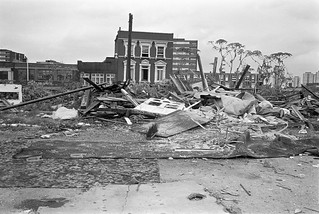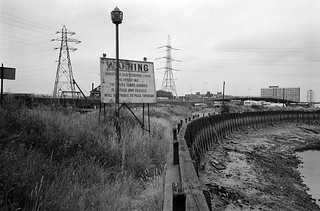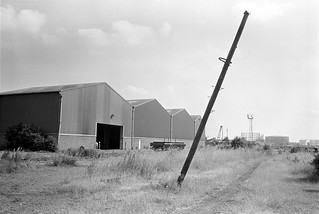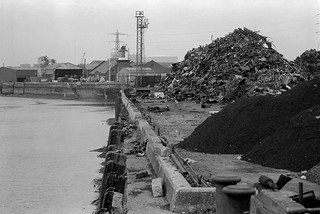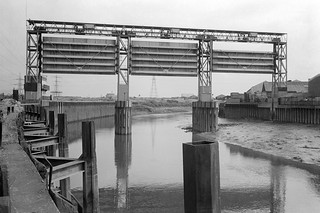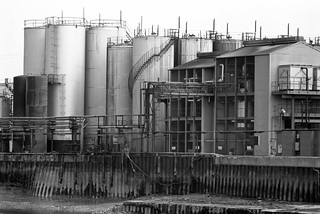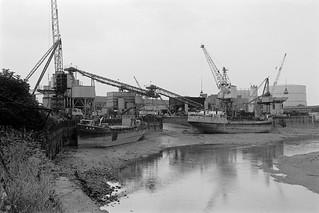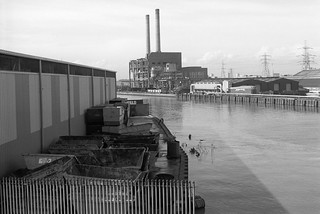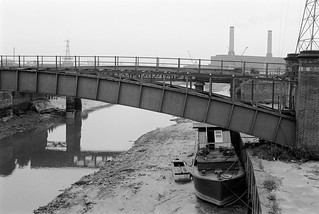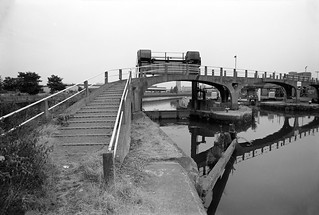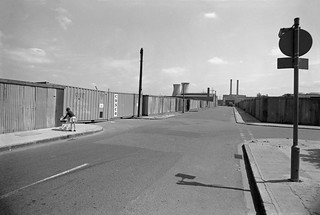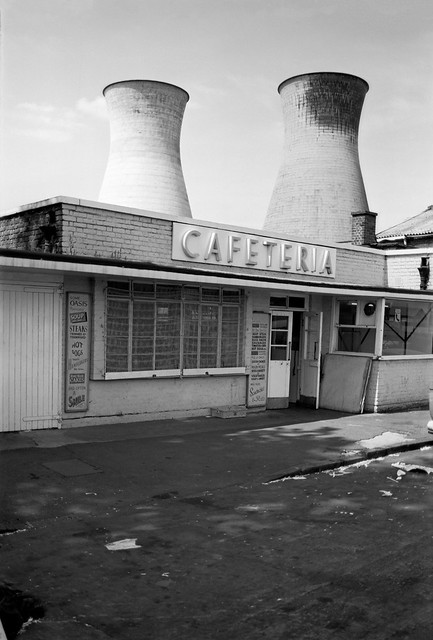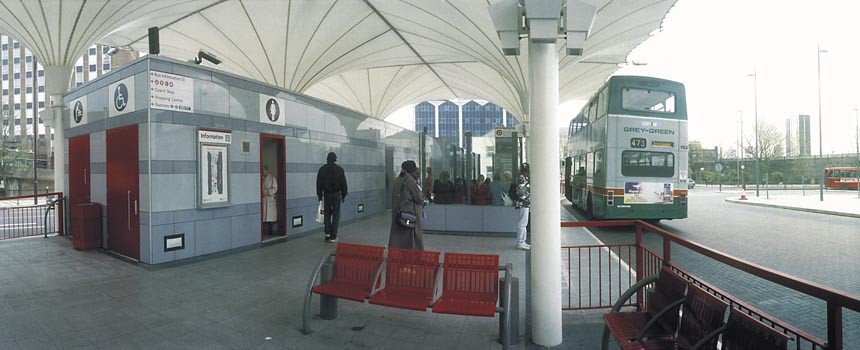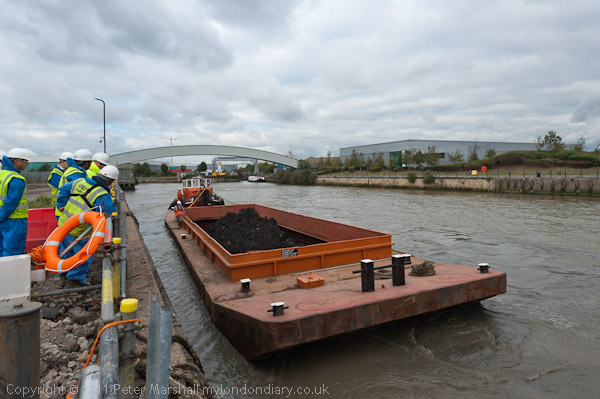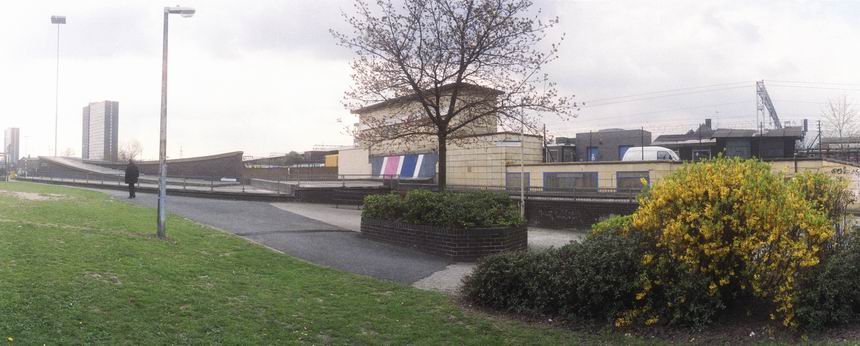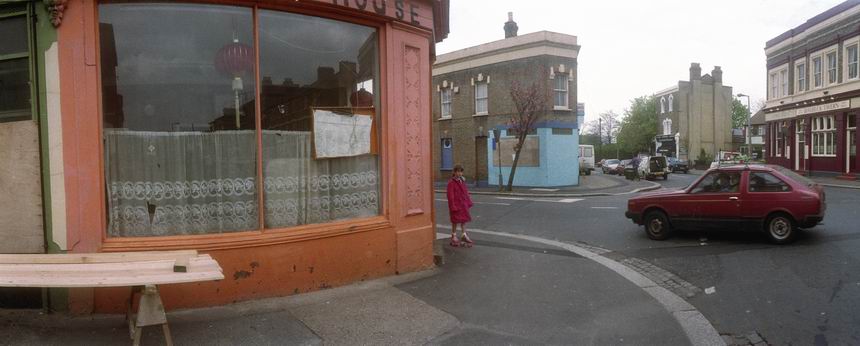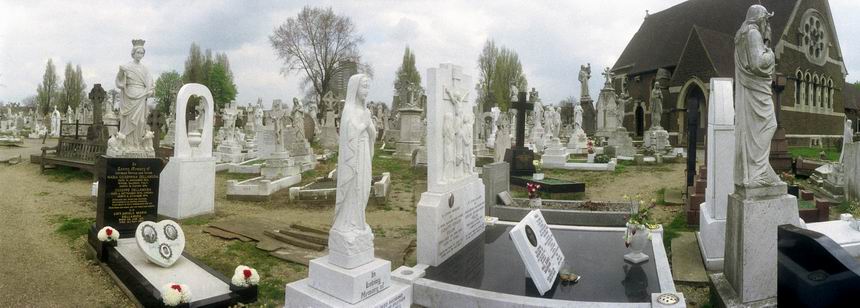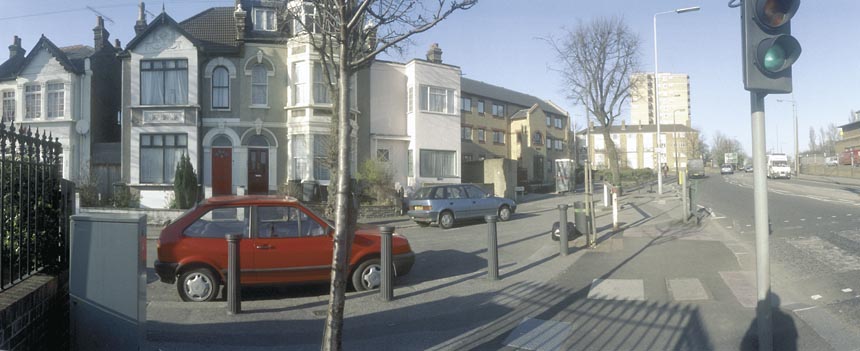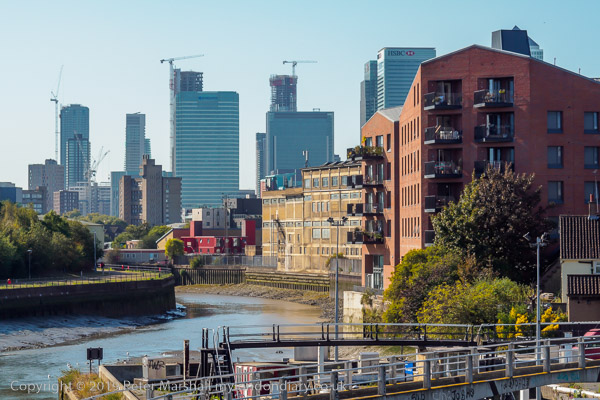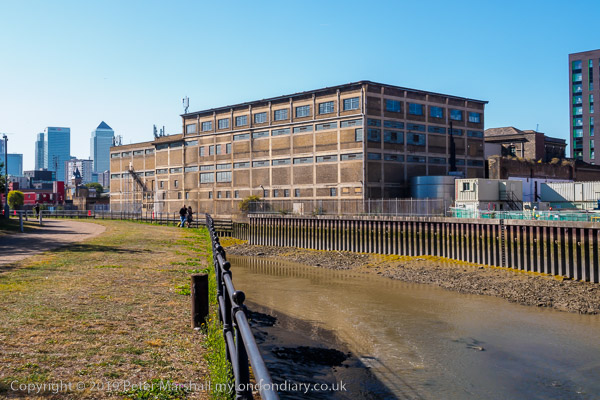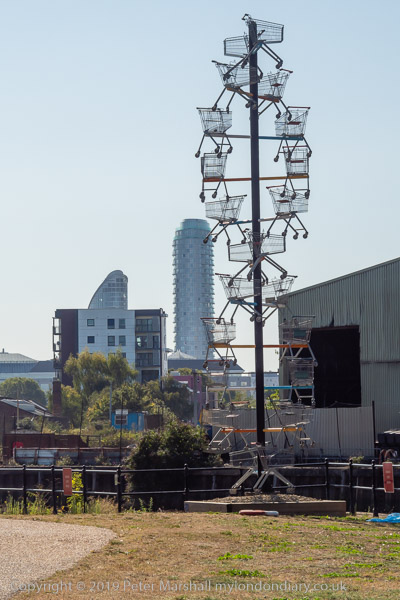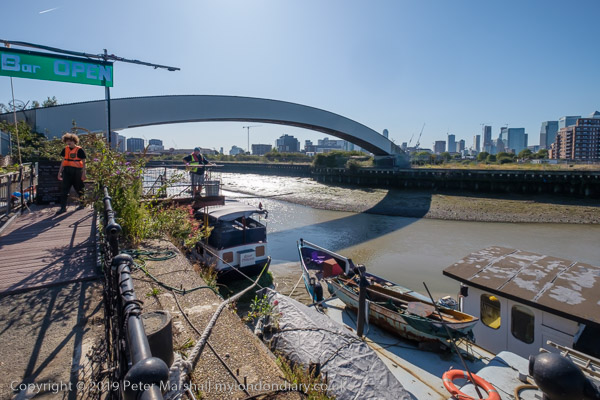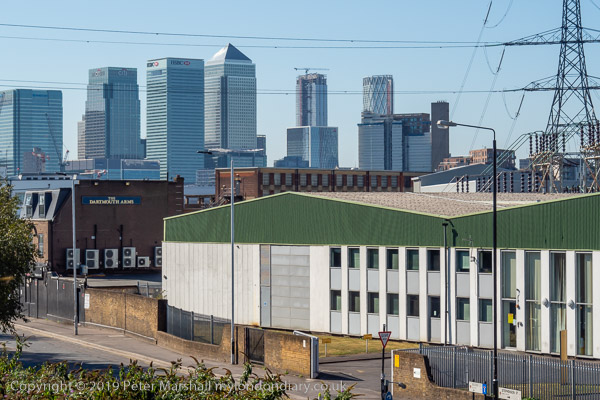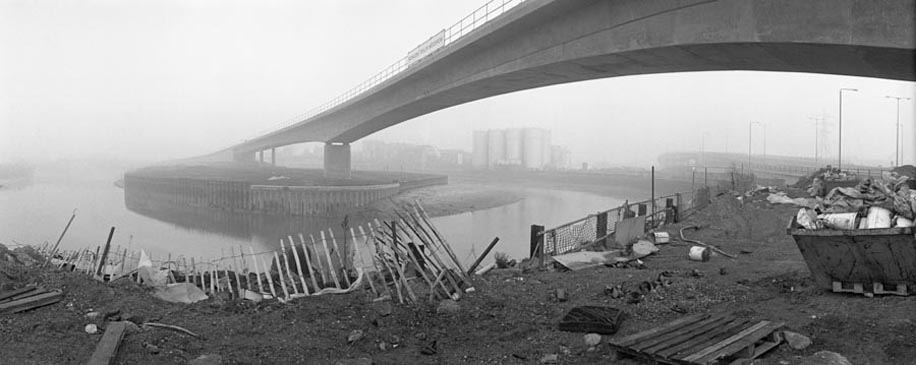The whole area has changed so much since 1983 that I find it very confusing to locate the exact locations of many of the pictures that I took, and I’ve occasionally got some of the captions wrong. Often the only way I can be sure is by carefully studying other pictures that I took where I am sure of the location.
The building at the centre of the above image can be seen in one of the pictures posted yesterday, and is clearly on Victoria Dock Road, this section of the road completely obliterated in the construction of the Docklands Light Railway and the Canning Town transport interchange. Victoria Dock Road now begins on the other side of Silvertown Way. The picture above was taken from somewhere near the flood barrier.
The warning light for the flood barrier was some way to the north, where the river bends around close to the East India Dock Road. At the left of the notice is a pub the East India Dock Road, long demolished, but both pylons are still there, along with the Newham Way flyover.
I think this picture was taken roughly where the Lower Lea Crossing now goes across Bow Creek and the river bends around to the east.
It is difficult to pinpoint the locations of these views taken on the same day as I walked down beside Bow Creek towards the Thames. The pylon visible here was on the north-east corner of the East India Dock Basin next to Orchard Place and has since been removed. The chimney is a small mystery as I think this is Brunswick Wharf power station which had two chimneys – but I may have carefully lined them up so one is hidden behind the other. In 1983 the station was still in use and only decommissioned in 1984.
Things are much clearer as the River Thames comes into view, and the creek swings around yet again towards the south. The power station across the river is the Blackwall Point Power Station on a site close to where the Millennium Dome was later built.
There was then still a railway line leading down to Thames Wharf, and this was still an industrial area. Things are rather busier not with these sheds still in use and the whole area here is now covered by piles of steel stocks as you can see from satellite images on Google.
Across Bow Creek I got a good view of London’s only lighthouse, at Trinity Buoy Wharf. Some years later I was to visit this site on various occasions for several art projects, including a show in which a few of my pictures of Bow Creek were part of the display. And with the late lamented London Arts Cafe I came to a picnic on the riverside and sat in the lighthouse to listen for a few minutes to Jem Finer’s Longplayer which began its thousand year performance here at midnight on the 31st of December 1999. But until 1988 it was still owned by Trinity House and busy maintaining buoys.
Thames Wharf on the River Thames was a busy industrial site which back then seemed mainly to be dealing in scrap metal, and I had to walk around a few heaps to make my way along the river. Although I rather felt I was trespassing, no one approached me. Security was far less strict back then.
This was around the limit of my walk and having taken my pictures – you can see a few more on Flickr – I walked back up Dock Road to Silvertown Way. I doubt if you can follow much of my walk today, but you do get a good overhead view of the area from the dangleway, London’s cable car across the Thames from North Greenwich to Victoria Dock. But don’t wait too long, as the sponsorship deal with the Emirates Air Line ends in 2022 and the future of this hugely loss-making service must be in doubt.
All photographs on this and my other sites, unless otherwise stated, are taken by and copyright of Peter Marshall, and are available for reproduction or can be bought as prints.
